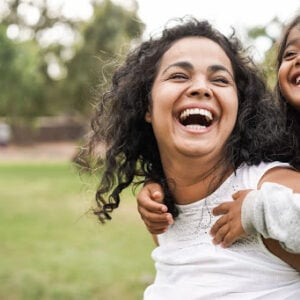Letting kids be kids: the newest therapy for anxiety in children

The rise of child anxiety
Based on recent academic sources, child anxiety appears to be on the rise. Even before the Covid-19 pandemic, there was a significant increase in the number of young people experiencing clinical-level anxiety. A meta-analysis of 29 studies reported in JAMA Pediatrics found that about 11.6% of kids had anxiety in 2012, which was a 20% increase from 2007. During the pandemic, these numbers nearly doubled, with approximately 20.5% of youth worldwide now struggling with anxiety symptoms. Anxiety disorders are among the most common mental health conditions seen among children and adolescents, with prevalence rates ranging from 4% to 20%.
In light of these findings, it is clear that child anxiety is indeed increasing, with the current global situation potentially exacerbating the issue. More research and attention are needed to address this concerning trend and provide effective support and interventions for children and adolescents experiencing anxiety.
One such study recommends a unique approach to childhood anxiety: independence.
Current Treatment Methods
In the world of child therapy, there are various innovative methods that therapists utilize to help young ones navigate their emotions and challenges effectively. These methods are not only beneficial in addressing specific mental health concerns but also in promoting overall well-being and resilience in children.
- Play Therapy: One popular approach in child therapy is play therapy. This method allows children to express themselves through play, giving them a safe space to explore their feelings and experiences. By engaging in play, children can communicate their thoughts and emotions in a natural and comfortable way, leading to insights and breakthroughs in their therapy sessions.
- Cognitive-Behavioral Therapy (CBT): Another effective method is Cognitive-Behavioral Therapy (CBT) adapted for children. It focuses on helping kids identify and change negative thought patterns and behaviors, teaching them valuable coping skills to manage stress, anxiety, or other mental health issues. Through CBT, children learn how to challenge unhelpful thoughts and develop healthier habits.
- Parent-Child Interaction Therapy (PCIT): Parent-Child Interaction Therapy (PCIT) is a technique that involves both the child and their caregiver. This method focuses on improving the parent-child relationship through positive interactions and effective communication. By teaching parents specific skills to support and nurture their child, PCIT helps strengthen the parent-child bond and promote emotional well-being in the family.
- Mindfulness and Relaxation Techniques: Incorporating mindfulness and relaxation techniques in child therapy can also be highly beneficial. Teaching children mindfulness practices, such as deep breathing exercises or guided imagery, can help them regulate their emotions, reduce stress, and improve their overall mental health.
- Exposure Therapy: During exposure therapy, children are gradually exposed to the situations or objects that cause them distress, allowing them to confront their fears in a safe and supportive environment. Through repeated exposure, the child learns to manage their fears and anxieties, leading to a reduction in symptoms and improved coping skills
These …read more
Source:: Social Media Explorer






